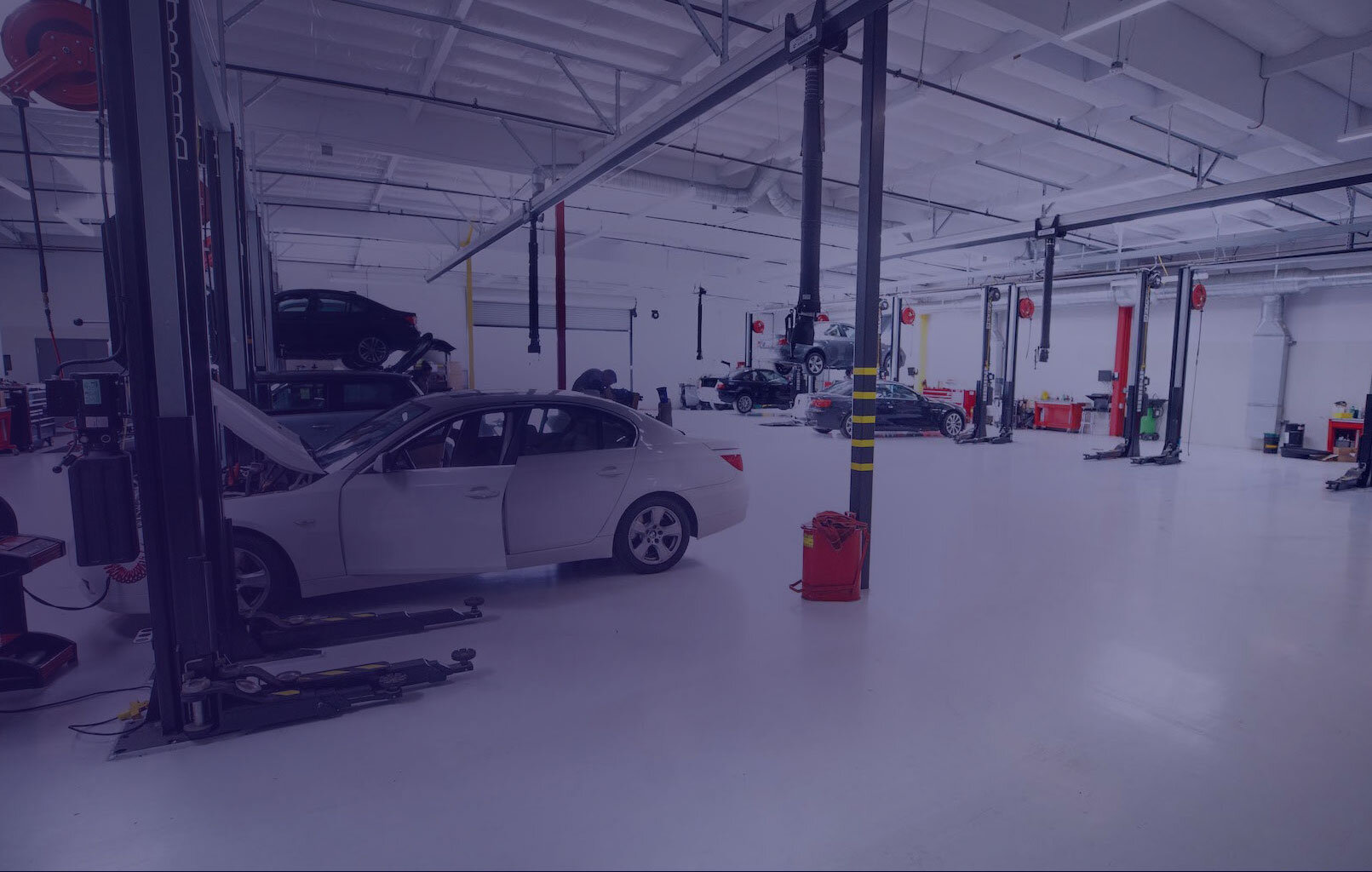
Auto Electrical Diagnostics and Repairs You Can Count On
Comprehensive Electrical Service
Whether you drive a BMW 3 Series, a MINI Cooper S or an Audi A4, your vehicle operates through a complex network of wiring, switches, relays and modules. Electrical components are located throughout the engine bay as well as the vehicle cabin. When an electrical problem occurs with your vehicle, there’s no telling where the fault may actually be. This is when it’s critical to seek the assistance of an expert in auto electrical service.
Car Battery FAQ
Stress-Free Advantage
Transparent Pricing
Text Updates
Digital Inspections with Pictures
Live Video Feed of Your Repair
Pay By Text Available
Battery Test and Recharge
$75 & Up
We will access your battery to test its charge level and perfomane, pending the results of this test we will either recharge your current battery or replace with a new one. A road test will be performed where applicable and a digital vehicle inspection with details of all test result(s), system fault(s), component(s) failure and required repair(s) will be provided to you.
*Additional diagnosis and testing time may be required at additional charges.
Typical service length: 1 - 3hrs
Assuming you have an appointment.
Battery Diagnostic Test
The battery will be inspected and diagnosed to understand the root cause of your vehicle's symptoms. A road test will be performed where applicable and a digital vehicle inspection with details of all test result(s), system fault(s), component(s) failure and required repair(s) will be provided to you.
*Additional diagnosis and testing time may be required at additional charges.
Typical service length: 1hrs
Assuming you have an appointment.
Battery Replacement
$250 - $750
Faulty battery will be removed and replaced with a new battery. Cables and terminals will be inspected and may require replacement. Final test will be preformed to ensure proper charging. Computer reset and radio code may also be required depending upon type of vehicle.
Typical service length: 1 - 3hrs
Assuming you have an appointment.
Reliable Alternator Replacement
A constant, dependable stream of electricity is necessary for convenience items such as power windows and audio systems, along with starting and safety features. Your car’s alternator is responsible for powering most of your vehicle’s electronics and keeping your battery fully charged. If it fails, you’ll notice lights flickering and intermittent operation of electrical components— plus the battery light will come on. Eventually your car won’t start, leaving you stranded and waiting for a boost.
If you are experiencing any of these issues, you likely need an alternator replacement.
Alternator Replacement FAQs
Book Online and Save
Apply any of the following coupons when making an online appointment and save.
Individual coupon cannot be redeemed or combined with other offers.
CAR BATTERY
+ What is a vehicle battery?
The vehicle's 12-volt battery is constructed of lead plates, sulfuric acid, and separators encased by a plastic housing – the battery is divided into six cells by the internal separators. There are two posts on the battery – a positive and a negative – which allow vehicle's battery cables to be attached & the battery to be inserted into the electrical system on the vehicle. The battery produces electricity by converting chemical energy into electrical energy. The measure of a battery’s power output is commonly seen in Cold Cranking Amps (abbreviated CCA), which is a measurement of the number of amps the 12-volt battery can produce at 0°F for 30 seconds while maintaining a voltage of at least 7.2 volts.
+ Why is the battery important?
This one is obvious! The primary function of the battery is to store energy to start the vehicle. When the energy is used to start the vehicle, the battery becomes discharged. Luckily, the battery has the ability to recharge, which is performed by the alternator when the engine is running. The battery also has a few secondary functions it performs, such as acting as a capacitor in the vehicle’s electrical system. Frequently (similar to household electricity fluctuations, but more frequent) there can be voltage spikes in the vehicle’s electrical system that could be potentially damaging to sensitive electronics. A vehicle’s battery will absorb these voltage spikes and prevent damage to these components. When the engine is not running, the battery also provides power to the vehicle's accessories which are usually supplied by the alternator, such as the radio, alarm, or lighting. It’s important to remember that there is a finite amount of power that a battery can provide. If you like to listen to the radio in the car while you're not driving, you should always have the engine running so the battery can charge. This will help make sure you can always restart your vehicle without having to call for a jump-start.
+ What can go wrong?
The biggest problem for a battery is heat, which damage internal components. If the battery is installed underneath the hood, they are typically seen located as far away as possible from the engine as possible. Other times, the manufacturers will locate the battery in different places on the vehicle, such as under the floor or in the trunk. Another common issue is sulfation, which happens when the lead plates inside the battery become coated with a hard layer of lead-sulfate. Sulfation occurs when the battery becomes discharged. Common causes of discharging the battery are extended periods of sitting, leaving a light on overnight, or driving with a failed alternator. Occasionally a battery can also leak, build up corrosion at the battery terminals, or have a loose connection to the battery cables. Any of these issues can reduce the amount of power the battery is able to provide. Batteries generally have a lifespan of four to six years of normal use. The battery will age because the active layer of material from the plates of the battery will deteriorate and sink to the bottom of the case. The battery will need to be replaced when the amount of active material remaining isn’t enough to start the engine.
+ How do you know if it needs work?
When your vehicle is serviced at regular intervals, it is common for a technician to inspect the battery in a few different ways. A battery is routinely checked to ensure it is not leaking and has clean and tight connections to the battery cables. Many technicians will also run what is called a “load test” on the battery. This test simulates an electrical load equivalent to starting the engine on your vehicle, and measures the battery’s electrical response. If your battery fails a load test, or shows a significantly diminished capacity, it’s a good idea to replace it soon in order to prevent yourself from getting stuck somewhere later on. If your battery is leaking, it will generally need to be replaced too.
ALTERNATOR REPLACEMENT
+ How do I know if I need to replace my alternator?
Since your alternator is responsible for keeping the electrical components of your car running, any faulty electrical component can be a sign of a bad alternator. Dim lights, dead battery, bad smells, or any odd sounds can point an alternator in need of replacement. The most common sign of a bad alternator is failure to start and a dead battery.
+ What is an alternator replacement?
The replacement involves saving the car’s preset electrical and digital settings, before disconnecting the alternator from the battery and other electrical components. The new alternator is then installed, connected properly, and the car is re-examined for electrical charging system performance. Other components related to the charging system include: Battery, Pulleys and Charging belts and fuses/relays. Depending on overall condition and wear these items will also be inspected and may require replacement as well.
+ How long does an alternator service take?
This can vary, but on a standard vehicle it can take one to several hours to remove the faulty alternator and replace it with a functional one.
Stress-Free Auto Care
Instant online booking.Limited waiting time in the shop.Pay up to 30% less than the dealership.






